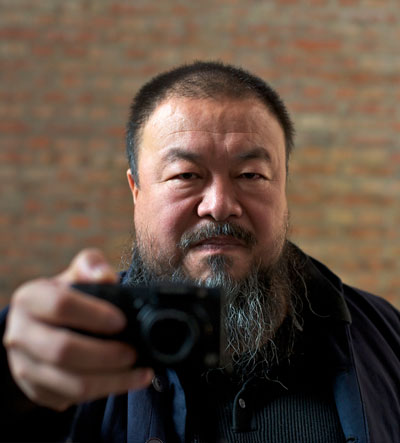
a scene from Alison Klayman’s AI WEIWEI: NEVER SORRY. Photo by Ted Alcorn.
Alison Klayman began making a documentary on Ai Weiwei in 2008, at what must have seemed like a summit of notoriety for the artist. He was in the middle of the Sichuan Earthquake Names Project, an attempt to uncover the death toll from the 2008 Sichuan earthquake, which the Chinese government refused to name. He had just designed the groundbreaking Bird’s Nest Olympic stadium and immediately denounced the Beijing Olympics in the international press. He had been an opponent of the state for years, with his explicit underground artwork and interest in Western ideas; now he willingly became an open target.
And this is all years before Ai’s infamous 81-day incarceration. Part of what makes “Ai Weiwei: Never Sorry” so compelling is that the artist’s life—or at least the narrative that Klayman has extracted—seemingly never stops revving up. As a young man Ai railed against an oppressive cultural heritage in Dropping a Han Dynasty Urn and the Study of Perspective series. He has become more preoccupied with the present in his later career, waging campaigns against the earthquake secrecy and the jailing of Chinese activist Tan Zuoren with dogged endurance. Integral in his mobilizing efforts are his website and Twitter account, which give off an energy and inspiration that “Never Sorry” makes palpable. For dissidents, the young, and any Chinese citizen unwilling to ignore the rest of the world, Ai is a vital figure.




 Facebook
Facebook Permalink
Permalink Digg
Digg Reddit
Reddit LinkedIn
LinkedIn StumbleUpon
StumbleUpon Tumblr
Tumblr

